Pearland, TX Pollen and Allergy Report for Summer 2023
Pollen Allergy Trends in Pearland, TX
When is pollen lowest in Pearland, TX?

February
Lowest month total PPM
Avg. PPM
When is pollen highest in Pearland, TX?

March
Highest month total PPM
Avg. PPM
How does pollen in Pearland, TX compare to Texas?
Pearland has a higher average PPM than the state of Texas.
Pearland yearly avg PPM:
Texas yearly avg PPM:
How does pollen in Pearland, TX compare to the USA?
Pearland has a higher average PPM than the USA.
Pearland yearly avg PPM:
USA yearly avg PPM:
Is pollen worse this year in Pearland, TX?
Spring 2023 was worse than spring 2022.
Spring 2023 PPM:
Spring 2022 PPM:
Average PPM in Pearland, TX
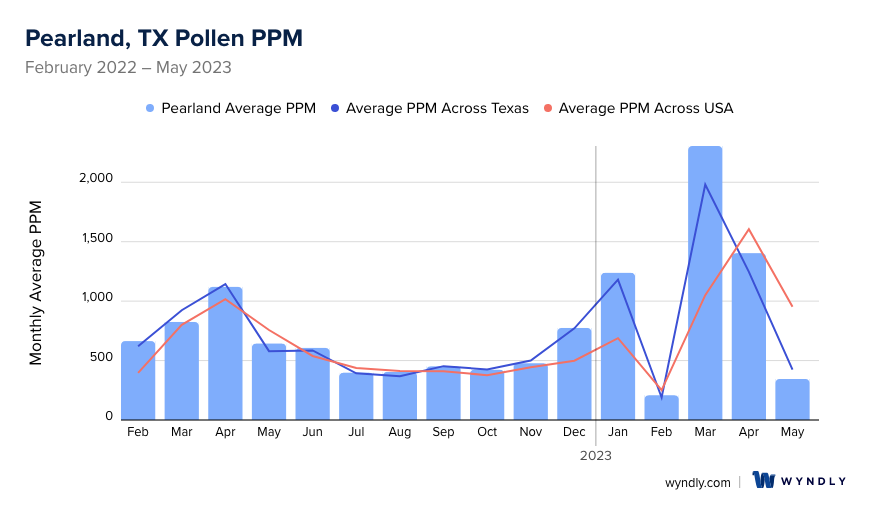
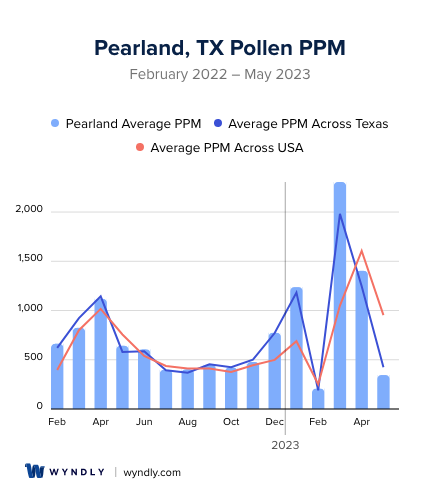
Pearland, TX Pollen and Allergy Breakdown by Month
Grass
When is grass pollen highest in Pearland, TX?
February has the highest grass pollen in Pearland, TX with an average PPM of
When is grass pollen lowest in Pearland, TX?
December has the lowest grass pollen in Pearland, TX with an average PPM of
Tree
When is tree pollen highest in Pearland, TX?
March has the highest tree pollen in Pearland, TX with an average PPM of
When is tree pollen lowest in Pearland, TX?
July has the lowest tree pollen in Pearland, TX with an average PPM of
Weed
When is weed pollen highest in Pearland, TX?
December has the highest weed pollen in Pearland, TX with an average PPM of
When is weed pollen lowest in Pearland, TX?
February has the lowest weed pollen in Pearland, TX with an average PPM of
Pearland, TX Pollen Monthly Breakdown by Pollen Type
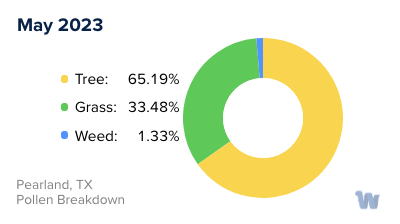
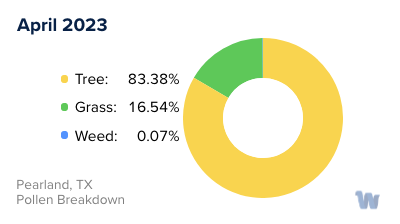
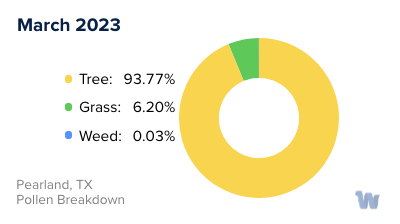
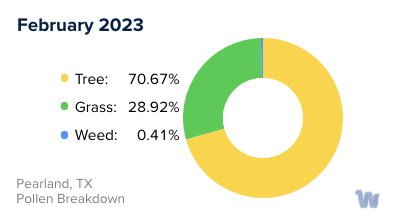
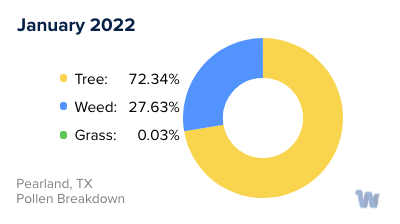
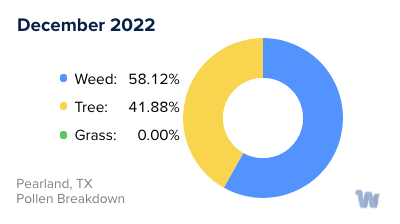
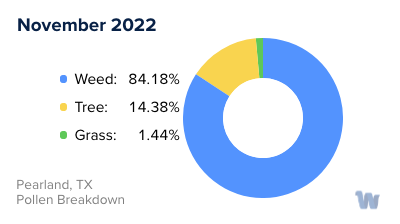
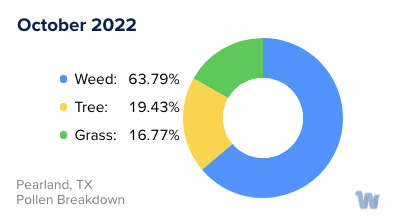

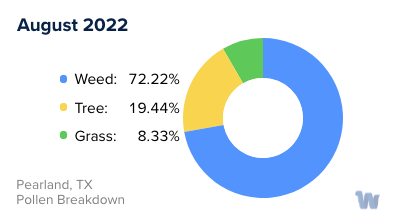
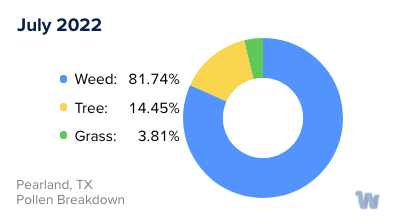
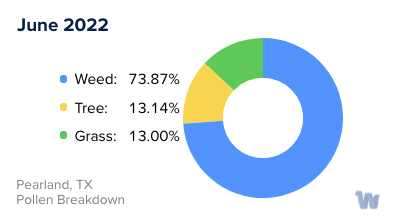
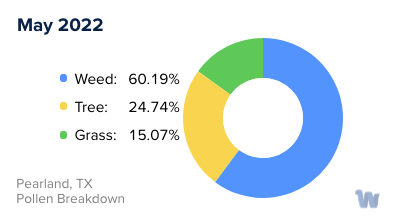
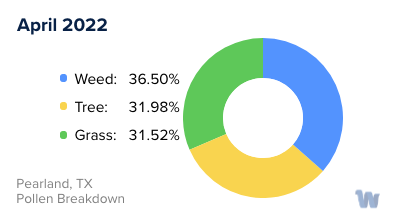
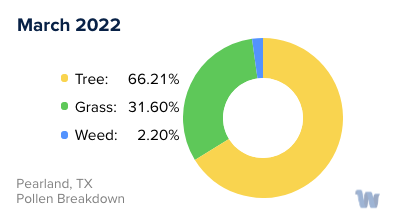
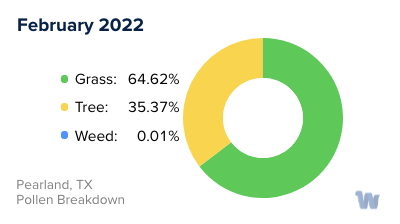
Pollen and Hay Fever in Pearland, TX
For many residents of Pearland, Texas, seasonal allergies are a year-round challenge. The primary culprits are pollens from a variety of sources, which peak at different times throughout the year, making it an ongoing concern for those sensitive to these allergens.
Pollen, an airborne substance produced by plants for reproduction, is the leading cause of seasonal allergies, also known as hay fever. In Pearland, Texas, the primary producers of pollen are grasses, trees, and weeds. Depending on what one is allergic to, symptoms may flare up in different seasons. Pollen allergies typically peak in the spring, summer, and fall.
Certain months, specifically December, January, May, and September, are particularly challenging as these are when seasonal allergies are generally at their peak in Texas. Evenings during these months can offer some relief as pollen counts tend to be lower.
The types of pollen that commonly cause allergies in Pearland, Texas include those from Bermuda grass, Timothy grass, Sweet vernal grass, and ragweed. Tree pollens are also significant offenders, with Cedar, Oak, Elm, Ash, Pecan, and Cottonwood trees being the most prevalent contributors.
The warm weather in Texas supports a longer allergy season, and as a result, a break from seasonal allergies is a rarity for Texans. The prevalence of cedar fever, a seasonal allergy caused by cedar tree pollen, exacerbates this situation. Interestingly, even during the winter months, indoor allergens can still cause issues for many allergy sufferers, meaning there is hardly a reprieve from the onslaught of allergies in Pearland, Texas.
Understanding the types of pollen and their peak seasons can help residents of Pearland, Texas, better anticipate and manage their allergies. However, it's crucial to remember that individual responses to allergens can vary greatly, and what affects one person severely may not affect another.

